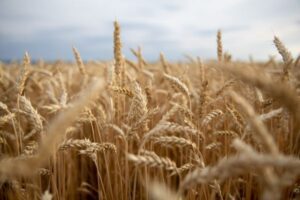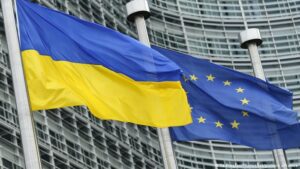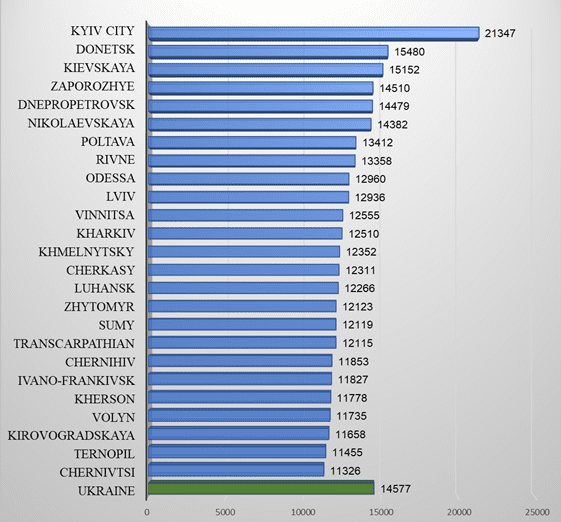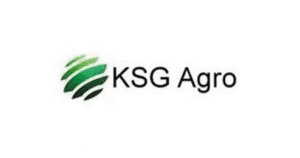
Romania has announced a tender for the repair of a broad-gauge railway connecting its Danube river port of Galati and the Moldovan river port of Giurgiulesti in order to transport grain from Ukraine without changing the rolling stock, since exports from Ukrainian seaports are blocked by warships of the aggressor country of the Russian Federation.
On the relevant statement of the Minister of Transport of Romania, Sorin Grindeanu, MP of Ukraine Dmitry Solomchuk (Servant of the People faction) wrote on his Telegram channel on Monday.
“Romania plans to urgently repair the old broad-gauge railway connecting the port of Galati from Giurgiulesti, located across the border with Moldova, so that freight trains loaded with grain from Ukraine can reach the ships without wasting time changing wheels at the border. A tender has been announced,” the MP said. in the social network.
According to Solomchuk, the advantage of the port of Galati is the ability to load both river and sea vessels.
Transportation of Ukrainian grain across the Black Sea remains the cheapest solution, despite the increase in the cost of ship insurance due to the Russian blockade of the Black Sea.
“Minister of Transport Sorin Grindeanu said that this Danube port, together with the port of Constanta, will become one of the key points in the region for the transport of goods and raw materials. Ukraine exports most of its grain to North Africa, and the Black Sea is the shortest route. Alternatives would be through the port Gdansk or Trieste, but the routes would be much longer,” the deputy summed up.
As reported, the Ukrainian and Romanian relevant ministries at the end of March began negotiations on the export of agricultural products from Ukraine through European seaports, including the Romanian port of Constanta.
The first cargo of Ukrainian corn weighing 71 thousand tons since the beginning of the Russian military invasion of Ukraine left the Black Sea port of Constanta on April 29 to the recipient.
The countries bordering Ukraine have responded to its problem with the export of agricultural products and have already significantly simplified the procedures for registering freight traffic or are actively working on it. In particular, Romania, Slovakia, Hungary, Lithuania, Latvia, Estonia, as well as Italy, Turkey, Bulgaria, Georgia, Denmark, Greece, Austria introduced liberal conditions for Ukrainian carriers.
Before the Russian military invasion, Ukraine monthly exported about 5 million tons of agricultural products through the ports of Odessa and Nikolaev, but now, due to their naval blockade by the Russian Federation, it can transport about 500 thousand tons of grain monthly. This leads to a monthly shortfall of about $1.5 billion in export earnings for the country.

Prime Minister Denys Shmygal asks Denmark to consider the possibility of supplying Ukraine with raw materials needed for farmers and oil products.
“I thanked for the decision to take part in the restoration of the city of Nikolaev together with other international partners. Also, in the coming days, as Prime Minister Matte Frederiksen promised, Ukraine will receive equipment and machinery that will help in the restoration of the liberated cities,” Shmyhal wrote on the Telegram channel following a meeting with Danish Foreign Minister Jeppe Kofodom.
According to him, the parties discussed the supply of military equipment, the tightening of sanctions against Russia and the rejection of Russian energy resources.
“I touched upon the issue of diversifying gas supply sources. I made a proposal to consider the possibility of supplying Ukraine with raw materials needed for farmers and oil products, since the enemy is purposefully trying to disrupt the sowing season and cause a shortage of fuel,” the prime minister wrote.
Among other things, Shmygal thanked Denmark for its strong political and financial support.
“We also count on Ukraine’s support in acquiring the status of a candidate for EU membership and on the approval decision of the European Commission to suspend import duties on all Ukrainian exports for a year,” he added.

The second tranche of the European Union’s macro-financial assistance to Ukraine in the amount of 600 million euros will be paid “very soon” in May.
This was reported to Interfax-Ukraine on Monday by a high-ranking official of the European Commission.
“The European Union has allocated 1.2 billion euros of macro-financial assistance, of which 600 million euros have already been paid, and the remaining 600 million will be paid very soon this month,” he informed.
The official also reminded that on May 5, a donors’ conference organized by Poland and Sweden will take place. “It will be a fundraiser for humanitarian aid,” he added.
Speaking generally about the reconstruction of Ukraine after the war, the representative of the European Commission stated the need to restore the country in accordance with “European standards, in accordance with the European Green Deal, the digitalization agenda, with the best principles of public administration, the rule of law – in every sense – in accordance with European standards.” “This is exactly how we think it can be done, that we can do it together. Of course, on our part, this will require very deep cooperation with Ukraine,” he added.
Average monthly wage by region in Jan 2022, UAH

SSC of Ukraine

Agroholding KSG Agro in 2021 increased its net profit by 16 times compared to 2020 – up to $20.27 million, EBITDA doubled – up to $12.28 million.
According to the holding’s report on the Warsaw Stock Exchange website on Monday, its revenue for the specified period increased by 44% to $30.75 million.
KSG Agro for the reporting period doubled its gross profit – up to $12.95 million, operating profit – one and a half times, up to $10.63 million.
“The past year, thanks to our efficient work and a number of circumstances, was successful for us. Thanks to the right selection of technologies and favorable weather conditions, our crop yields set a record for the last 10 years. In the pig segment, we received good intermediate results from our long-term project for the renewal of the pig population sows of Canadian genetics Genesus”, – commented on the results of the holding’s work, the head of its board of directors Sergey Kasyanov.
According to the report, the working capital of the agricultural producer by December 31, 2021 increased by 9.5 times compared to December 31, 2020 – from $1.1 million to $10.6 million.
Last year, the agricultural holding increased profits in the crop segment by 2.2 times compared to 2020, to $18.3 million, while in the livestock sector it increased by 9%, to $11.2 million.
According to the report, the agricultural holding collected 31.02 thousand tons of wheat in 2021 (+ 72% by 2020); 18.21 thousand tons of sunflower (+55%); 8.56 thousand tons of barley (+76%); 9.33 thousand tons of corn (an increase of 3.4 times) and 0.76 thousand tons of rapeseed (a decrease of 3.6 times).
The number of sows at KSG Agro last year increased by 3% – up to 5.56 thousand. At the same time, the total number of animals (pigs and piglets) for the specified period increased by 5.5% – up to 43.7 thousand heads.
“Currently, management assesses the risk that any fighting will reach the group’s pig farm as low. The group also temporarily moved its headquarters from the city of Dnipro to Chernivtsi, close to the western border of Ukraine and away from Russian aggression,” the group said. in a group message.
As of December 31, 2021, the agricultural holding’s assets increased by 13.5% compared to the same date in 2020, to $71.44 million, while its current debt obligations decreased by 20.4%, to $25.74 million, and long-term liabilities – by 11%, up to $22.36 million.
The vertically integrated holding KSG Agro is engaged in pig breeding, as well as the production, storage, processing and sale of grains and oilseeds. Its land bank is about 21 thousand hectares.
According to the agricultural holding itself, it is among the top 5 pork producers in Ukraine.
KSG Agro in 2020 reduced net profit by 3.2 times compared to 2019 – to $1.27 million, revenue – by 11%, to $21.34 million, while increasing EBITDA by 2.9 times – to $6, 02 million
The owner and chairman of the board of directors of KSG Agro is Sergey Kasyanov.